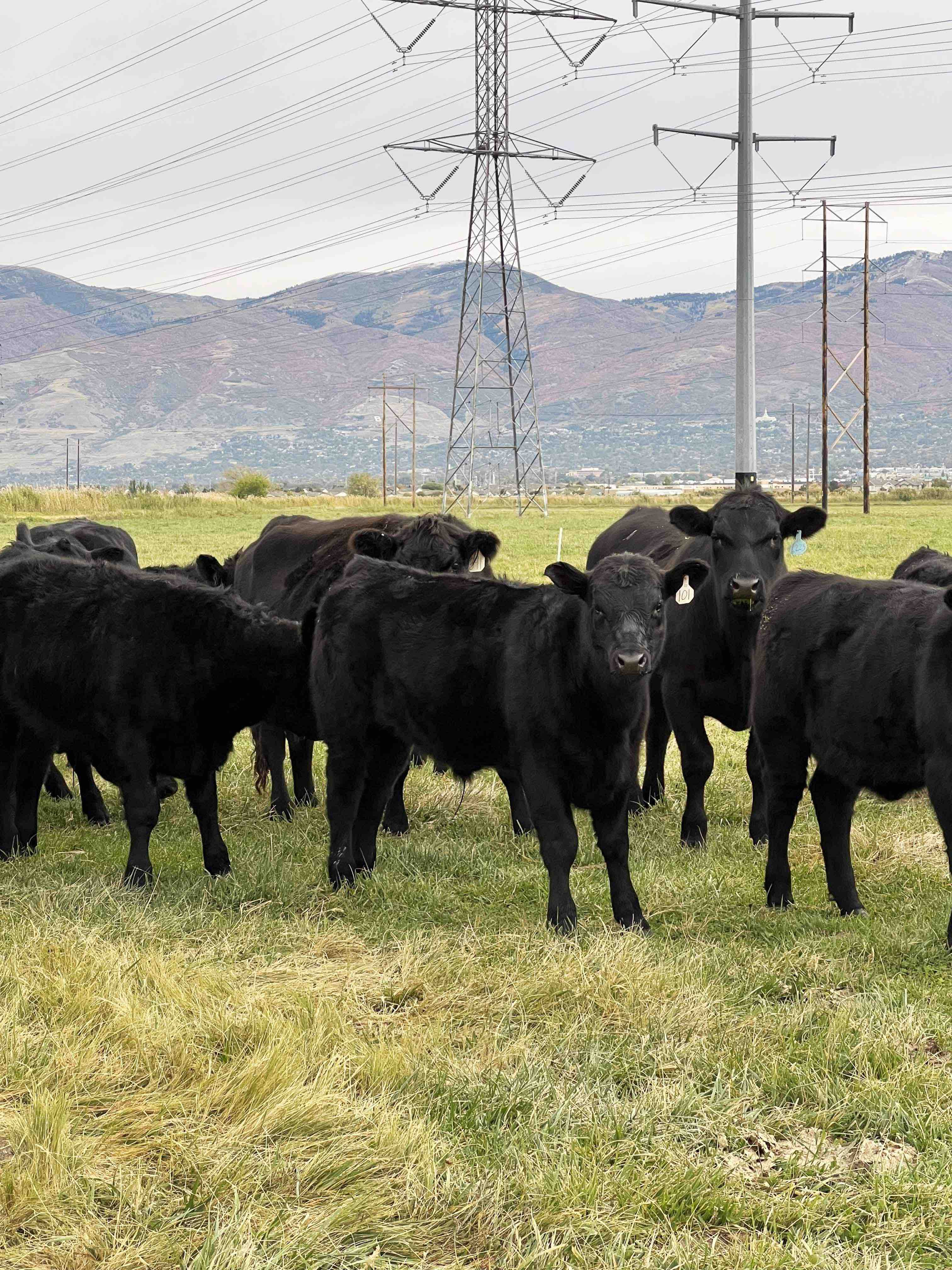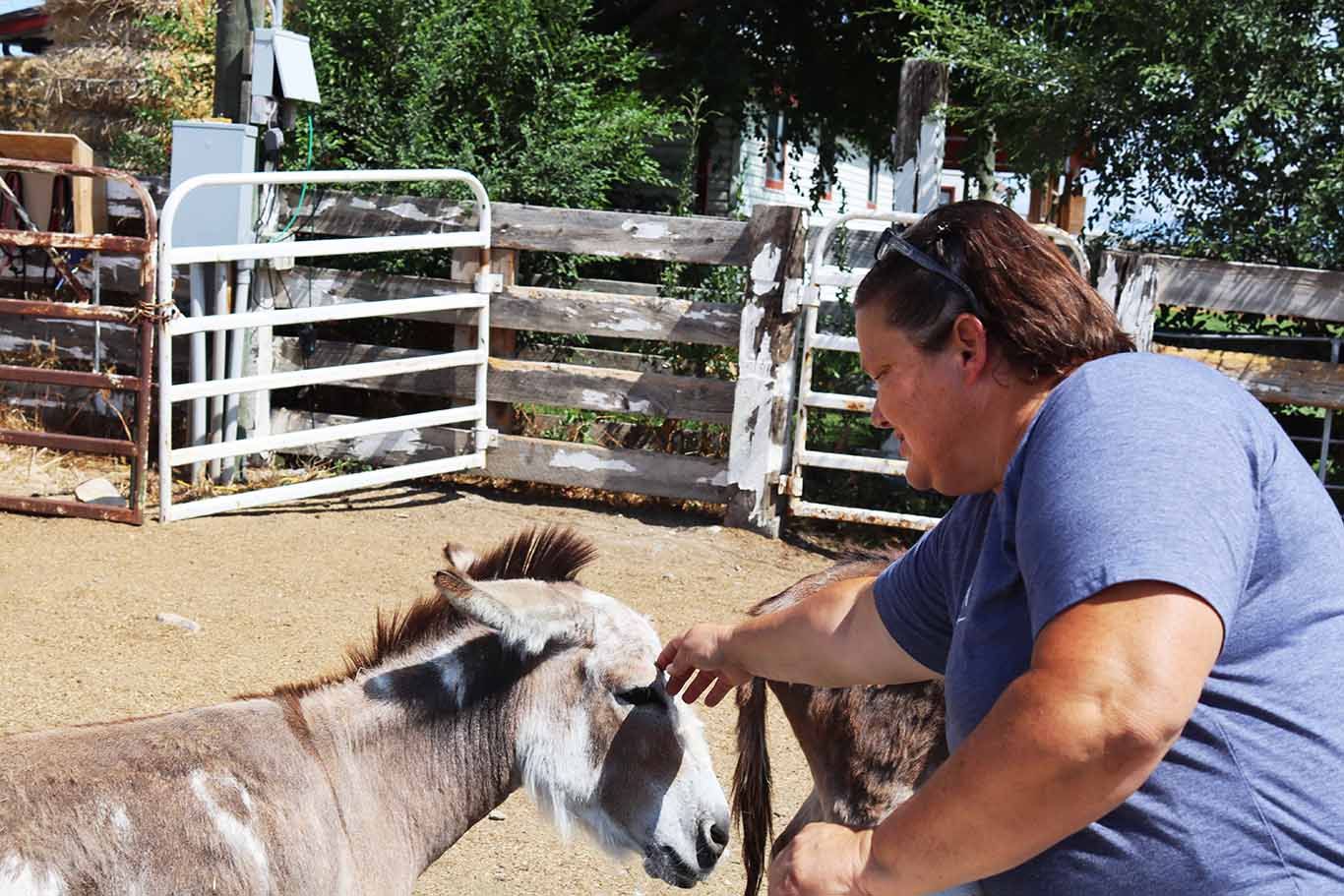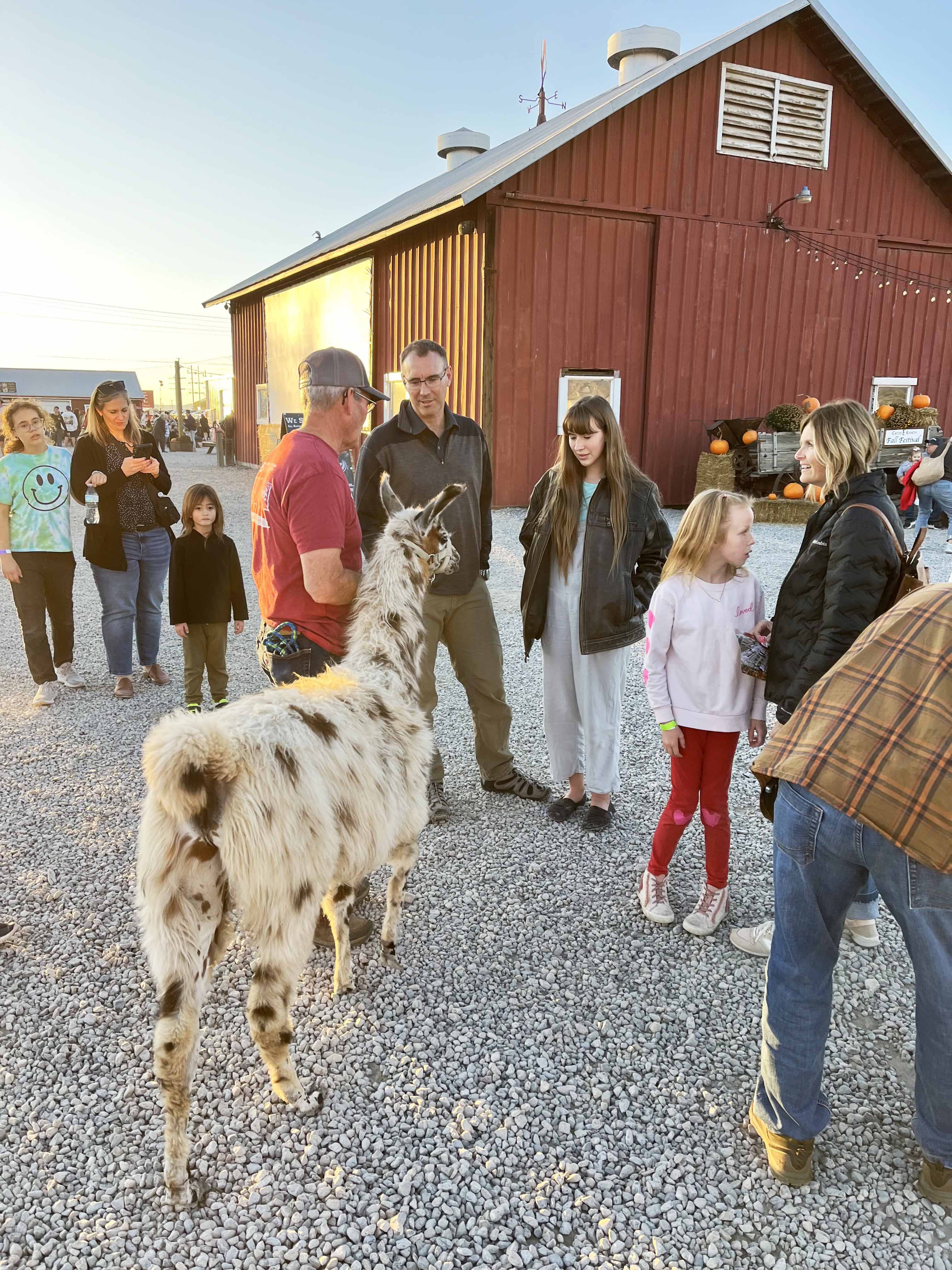Cross E Ranch Maintains Legacy of Ranching in Salt Lake City
Author
Published
8/13/2024
With the redevelopment of the Salt Lake City and City Creek shopping area and the explosive growth in the Salt Lake Valley and suburbs in recent years, it may surprise readers to know of a holdover from Utah’s early settlers still ranching within the shadows of jumbo jets and fulfillment centers. But the Hinckley Cross E Ranch continues to be a stable influence in the community and shares its story of survival.
“We want to help make a connection to agriculture at our ranch for any that come to visit – even if just for a minute,” said Heather Limon, owner of Cross E Ranch in North Salt Lake. “We face continued encroachment from development and are farming on ground that isn’t the best, but we don’t want to sell and move somewhere else.”
In 1867, Brigham Young, president of The Church of Jesus Christ of Latter-day Saints, commissioned Heather’s 2x Great-Grandfather Ira N. Hinckley, to build a fort in Millard County – halfway between Salt Lake City and St. George –which came to be known as Cove Fort. Ira became a well-known figure in Millard County and after the fort was no longer used, the family found themselves farming the fertile soil set near the Sevier River in nearby Bloomington, Utah. In 1891, the name Bloomington was dropped and replaced with the name Hinckley in honor of Ira. The Hinckley family lived and farmed in Hinckley for many years.

Fast forward to 1934. Alonzo Arza Hinckley, son of Ira, was called as a member of the quorum of the 12 apostles in the Church and found himself moving from Millard County to Salt Lake City. His children, who were adults by then, followed him to the city. Two of his sons, Rulon and Arza, purchased and farmed all of the ground that is now the Salt Lake City airport. These brothers were among the first to raise and breed purebred black Angus cattle in Utah.
“Rulon's son, and our father, David Hinckley, began farming as a young boy and loved farming,” Heather said. “He left the farm as a young man to chase his dreams, but the farm never left his heart. As soon as he got a chance, he returned and began his career as a rancher. He farmed this area for more than 40 years. We are now 5th and 6th generation farmers in Utah, and we are thankful every day for our dad and grandpa.”
The Cross E ranch name (+E) comes from the brand the family uses on their cattle. The brand is one of the oldest brands west of the Mississippi, though it originally belonged to the Jeremy Family, who were sheep ranchers in Utah. David Hinckley began leasing the farm from Tom Jeremy in the 1960s where he leased both Jeremy’s land and his cows. Despite the hard growing conditions because of the alkaline soil, Dave worked relentlessly alongside Tom for years to build the ranch, and Dave became like a son to him. After many years working together, Dave had the opportunity to finally buy his own herd of cattle with financing help from Tom Jeremy, and so the Hinckley family paid tribute by continuing the use of the brand.

Heather (Hinckley) Limon continues the tradition of farming excellence learned from her father and she negotiates the changing times and encroachment of neighboring development. A growing community has certainly brought changes and challenges for the family, which has included losing grazing land where the Salt Lake International Airport now stands, as well as the new state prison. Other changes while smaller in scope, have also made farming difficult – including the rise of fulfillment warehouses and other commercial projects.
The changes have caused the family’s cattle herd to change dramatically, from raising over 1,000 head of cattle to now less than 50. It also makes farming land and harvesting crops more difficult, because of the challenge of moving equipment in populated areas and the ability to generate returns on that expensive equipment. To help stave off the challenge of development and keep agriculture alive in Salt Lake City, Limon and her brother (Dalon Hinckley) are working to secure a conservation easement, which compensates the family for the exchange of the land’s development potential and allows the Cross E Ranch to continue to stay a productive ranch.

But Limon will tell you that growth can bring opportunities as well. She and her brother have opened the farm up to guests from throughout the community who are almost amazed to see a cattle ranch within sight of downtown Salt Lake City. It is almost a little jarring to see airline jets taking off in the viewshed of the farm. Limon opens Cross E Ranch up to classroom and pre-school visits as well as guests to any of the several festivals they host.
“We’ve brought in about 80,000 visitors during our fall festival and around 40,000 for our spring festival,” Limon said. “They come and eat hamburgers that we make from our own beef, line up for apple cider donuts, and go through our corn maze or pumpkin patch. We also have sunflowers and are working to have a tulip festival in the spring.”

The rise in agritourism has helped bring additional understanding of agriculture as well as commercial opportunities to help offset the bottom line, but it’s not without effort. Managing staff, negotiating hiring and training employees, and navigating the at-times confusing regulations all take time and can be confusing, but they can provide opportunities for future generations to continue the farm and find a place where they can contribute.
Opening up farms to the public has proven to be a great way to build connections to what was once commonplace to most of residents and solidify that relationship to our most basic need of growing food and growing community.
The Sunflower Festival at Cross E Ranch starts September 6 and the fall festival shortly after on September 20. For more details and information, visit crosseranch.com.
Want more news on this topic? Farm Bureau members may subscribe for a free email news service, featuring the farm and rural topics that interest them most!
